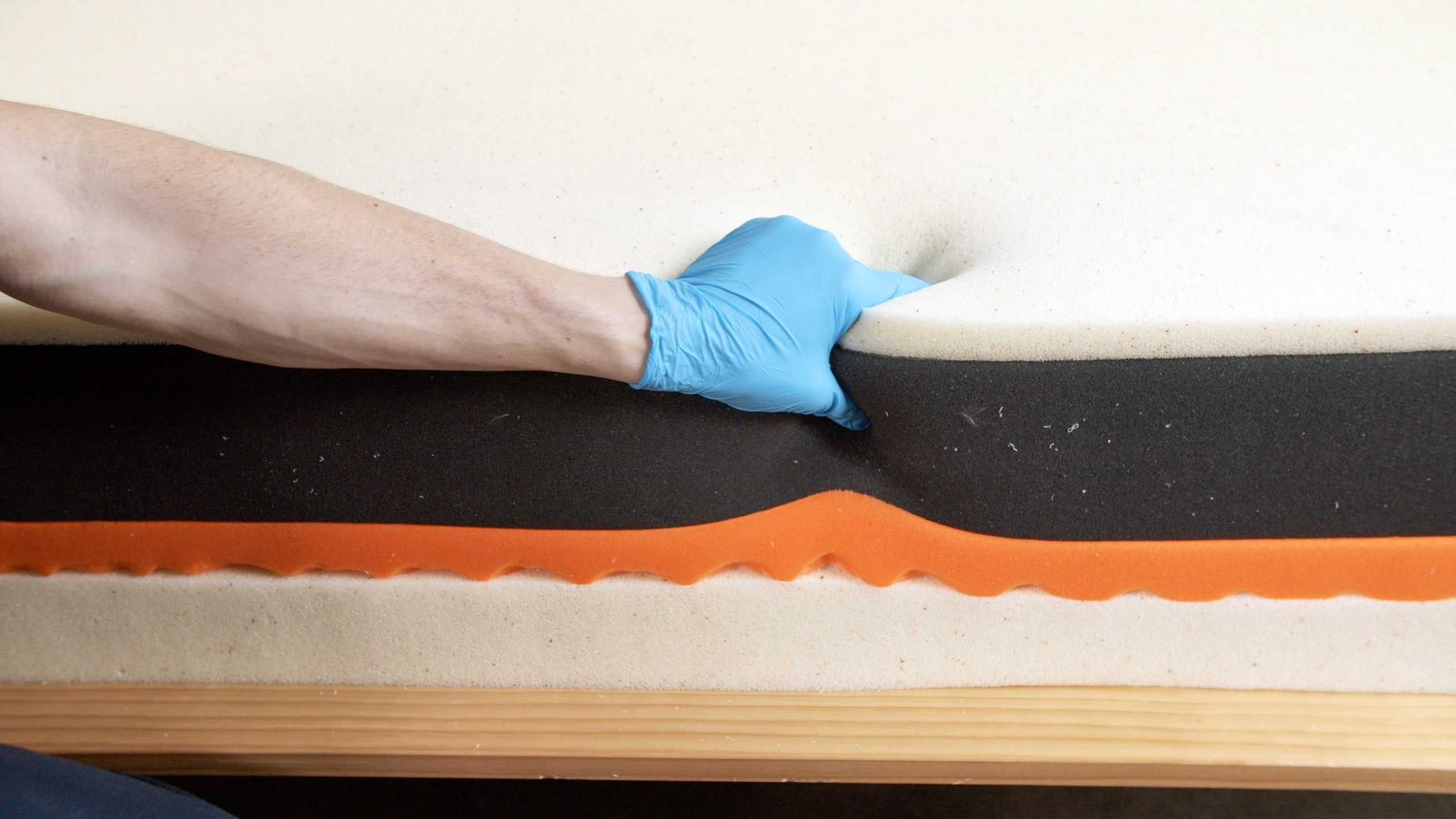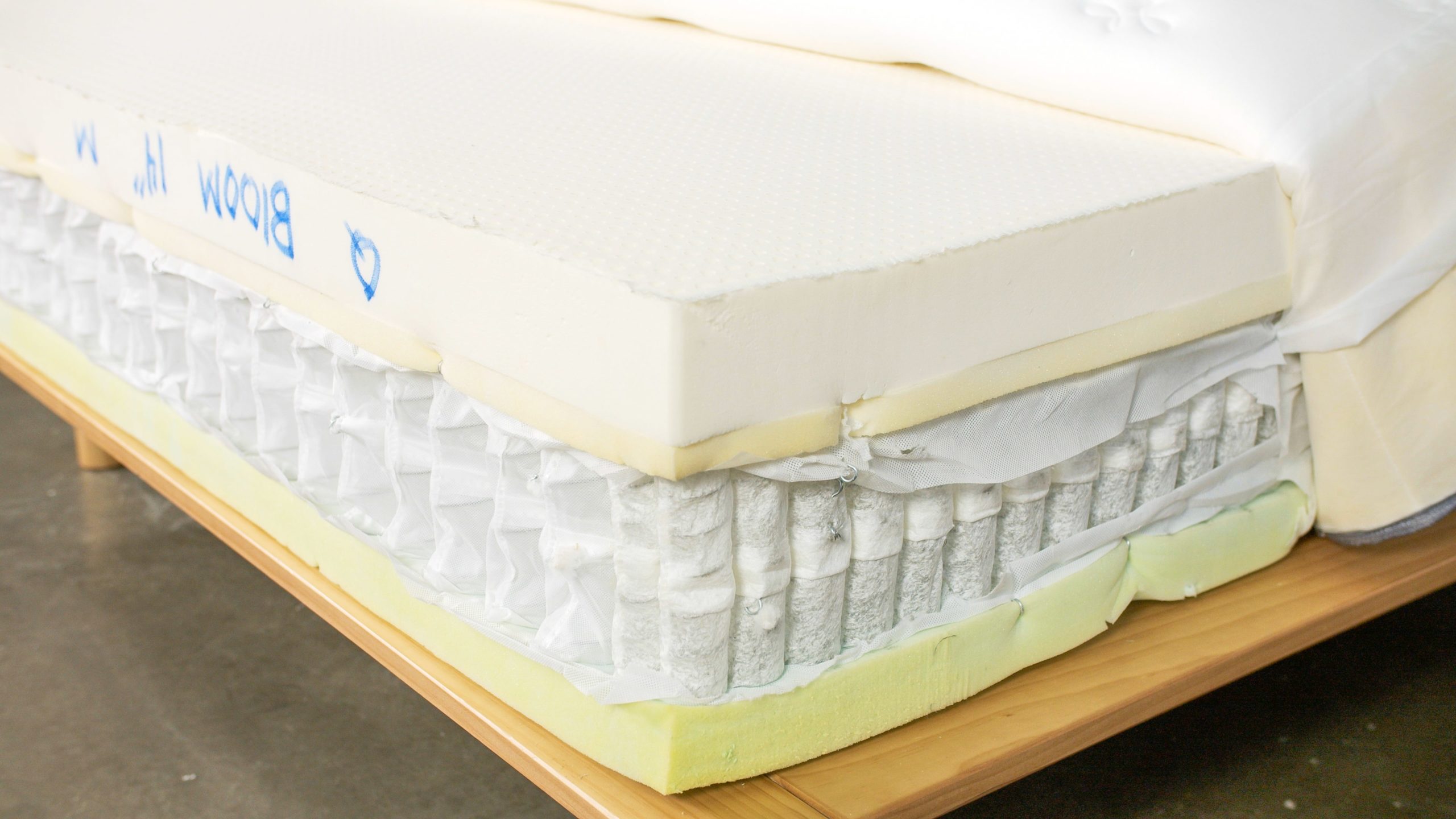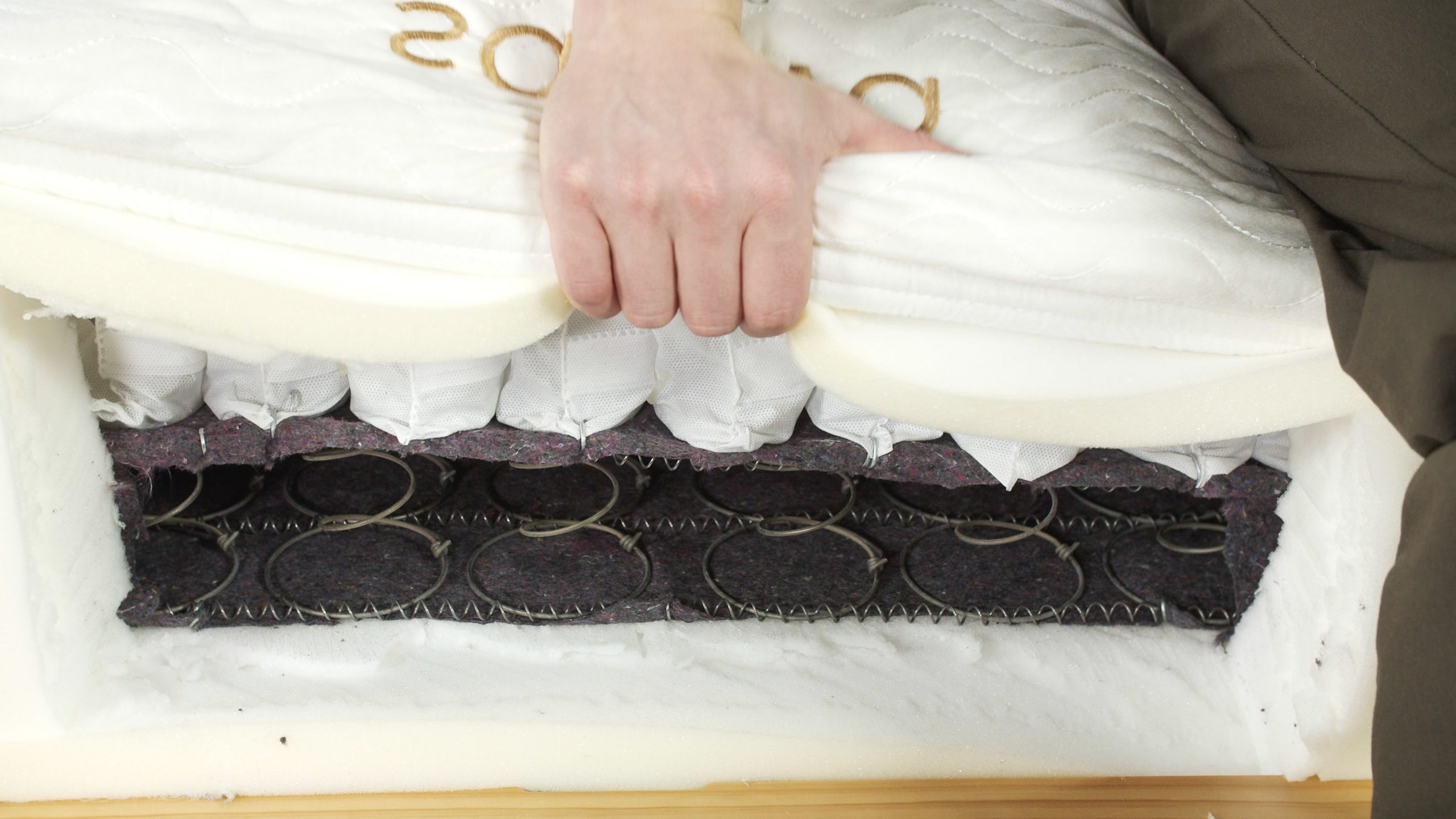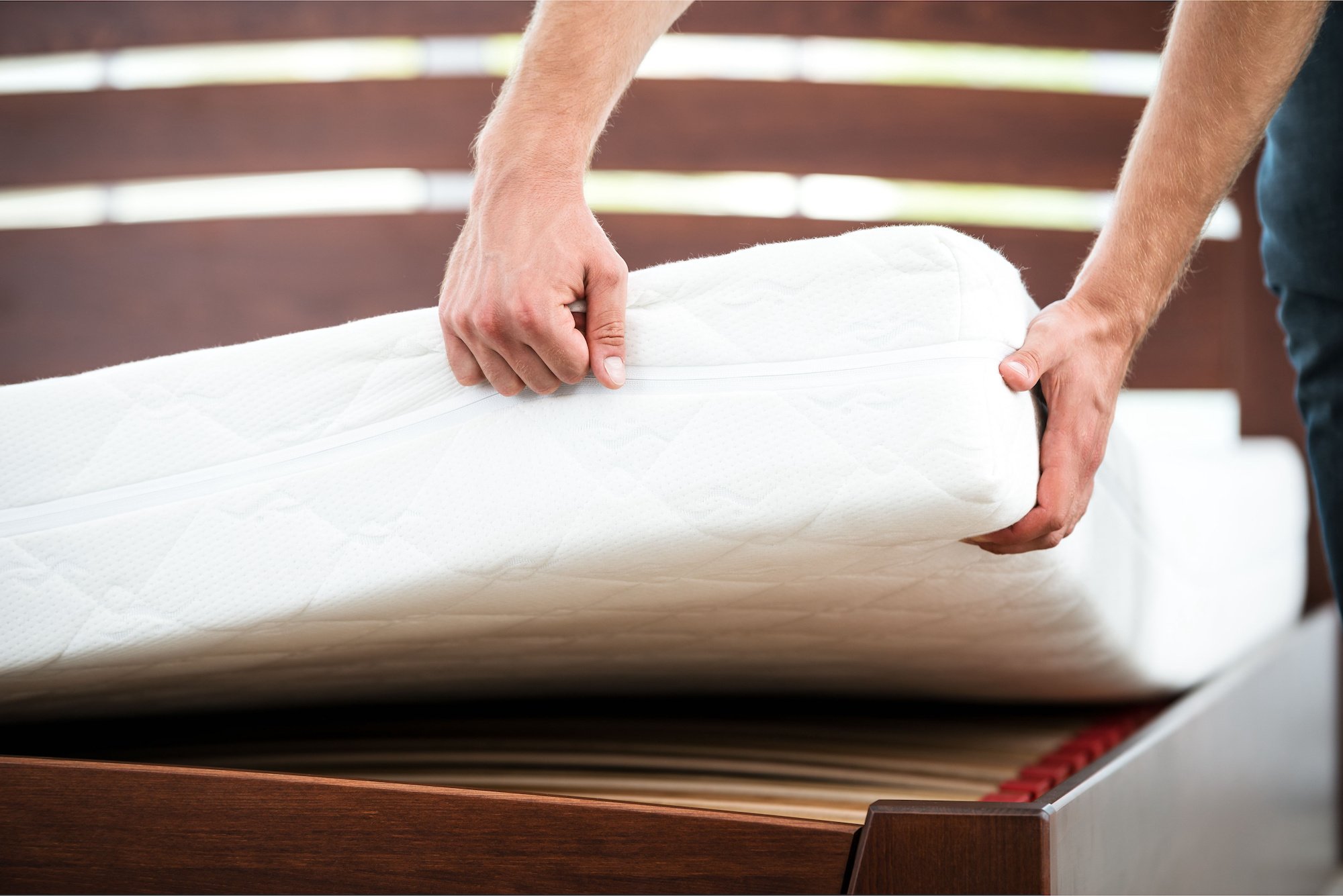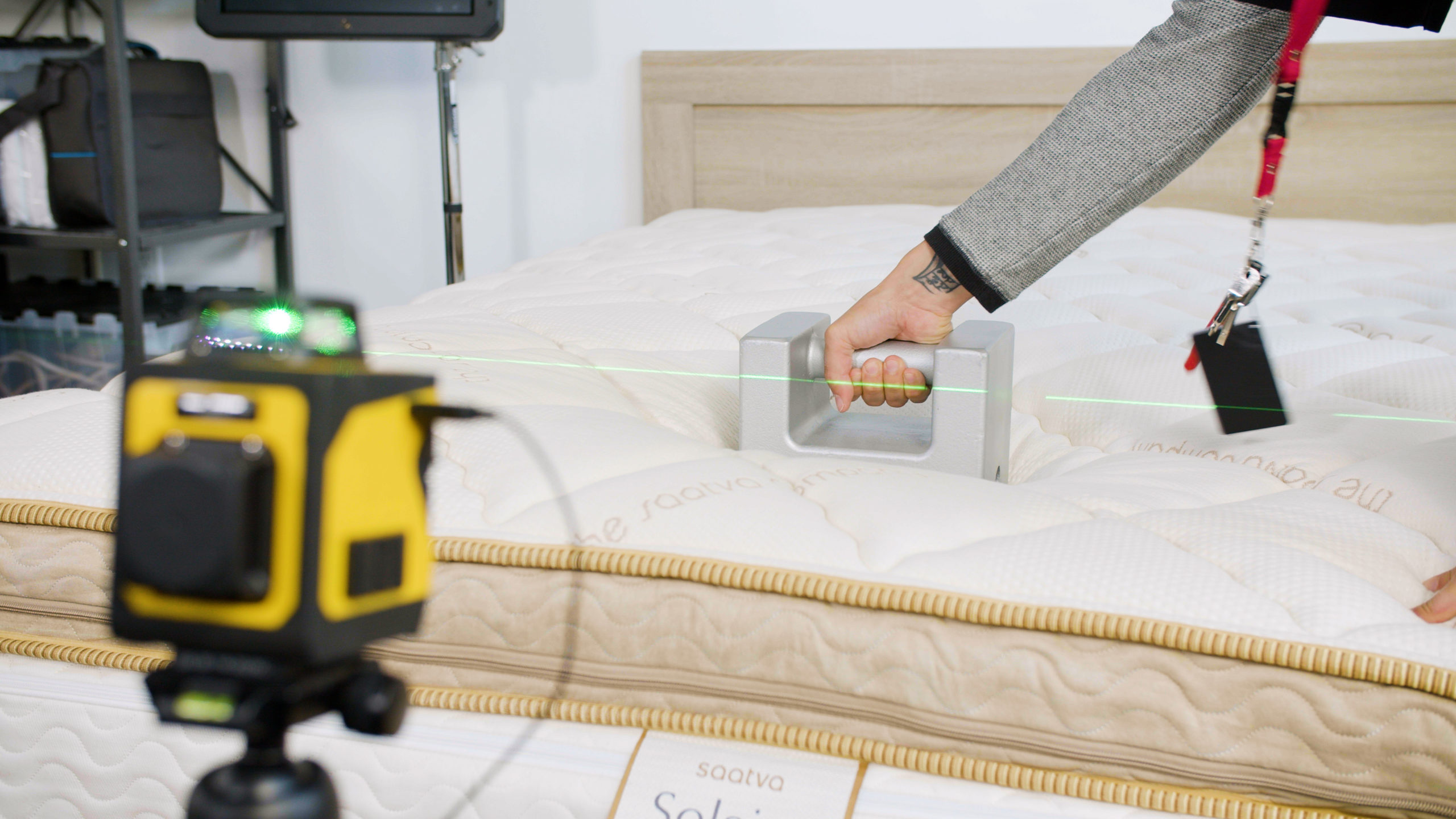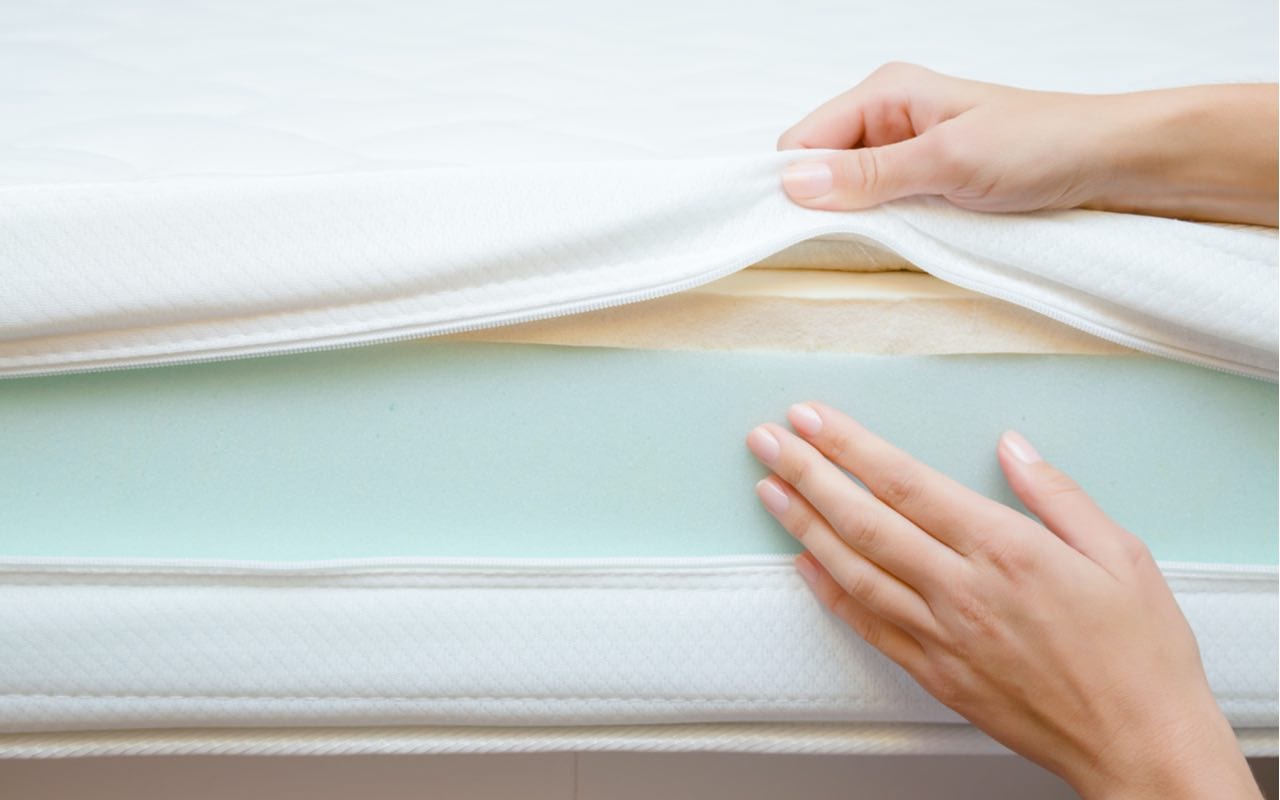When you buy through our links, we may earn a commission. Products or services may be offered by an affiliated entity. Learn more.
Mattress Construction
The layers of a mattress work together to create a distinct feel for sleepers. Understanding the purpose of these layers and the pros and cons of different materials can help you pick out the best mattress to suit your needs and personal preferences.
Comfort Layer
“Comfort layer” refers to the topmost layer or layers of a mattress. These are typically constructed from soft materials that cushion and contour to your body. Standard-height mattresses usually contain one or two comfort layers, but some high-profile models feature three or more.
The thickness of comfort layers is often tied to mattress firmness. A mattress with a firm or extra firm feel may contain only 1 to 2 inches of comfort materials, whereas a soft or medium soft mattress can feature 4 inches or more. For a mattress with mid-range firmness, a comfort layer typically measures 2 to 3 inches thick.
Common comfort layer materials include:
Memory Foam: Also known as viscoelastic polyfoam, memory foam is engineered to become softer and more adaptive when exposed to body heat. The foam contours closely to the body, creating the signature “hugging” sensation many people associate with this material. Memory foam is particularly popular with side sleepers because it cradles the shoulders, lower back, and hips, which can improve spinal alignment and reduce pressure points.
Adaptive Polyfoam: Adaptive polyfoam contours to the body and evenly distributes weight, much like memory foam, but it doesn’t hug as closely. The foam is also more responsive than memory foam, so you may notice a slight bounce when you get in and out of bed.
Latex: Latex is a popular alternative to foam for a few reasons. The material – traditionally derived from the sappy extract of rubber trees – is naturally responsive and durable. It contours very gently and won’t sink too much beneath your body. Latex also retains less body heat than most foam, so mattresses with latex comfort layers often sleep cooler than their foam-based counterparts.
Wool or Cotton Batting: In recent years, some mattress manufacturers have eschewed foam and latex in favor of wool or cotton batting. This material offers decent padding for the body but very little conforming, making it best suited to people who don’t want to sink into the mattress very much.
Let us help you find the perfect bed
Answer a few questions to find the right mattress for your unique needs
Transitional Layer
The transitional layer of a mattress is located between the comfort layer(s) and the uppermost part of the support core. The purpose of this layer is to reinforce the comfort layer and provide a buffer between your body and the base materials. For this reason, transitional materials are usually denser and firmer than the comfort layers but still fairly soft compared to the support core. Most transitional layers measure 1 to 3 inches thick.
Transitional layers are often composed of medium- to high-density polyfoam. Unlike adaptive polyfoam, transitional polyfoam is fairly firm. This ensures your body won’t sink too much and come into contact with the support core.
Latex may also be used as a transitional material due to its responsiveness and durability. Additionally, some innerspring and hybrid models feature transitional minicoils for extra support. Minicoils may be encased in foam or wrapped in fabric to make them feel less stiff and reduce motion transfer. Mattresses with these transitional layers are usually quite bouncy.
Support Core
The support core is intended to stabilize the entire mattress. Base materials are much firmer and denser than those found in the comfort and transitional layers. This ensures sufficient reinforcement for your body. Support cores are traditionally the thickest part of a mattress and usually measure between 6 and 10 inches thick.
Common support core materials include:
Coils: Innerspring and hybrid mattresses feature steel coils in their support cores. Coils provide unparalleled support and can also make a mattress feel quite springy and breathable, especially if the comfort and transitional layers are relatively thin. Traditional innersprings may contain Bonnell (hourglass) or continuous wire coils, while most hybrids are constructed with pocketed coils wrapped in fabric.
Foam: All-foam beds are designed with support cores of high-density polyfoam. While this material is quite firm, it may not reinforce a mattress quite as much as a coil system. Most sleepers can expect a bit more sinkage from an all-foam model – especially along the perimeter when getting in and out of bed.
Latex: All-latex mattresses feature dense latex in their support cores. In most cases, Dunlop latex is used. This material is known for its dense, bottom-heavy composition compared to Talalay latex, which is a lighter, more responsive material often used in comfort and transitional layers.
Air Chambers: Airbed mattresses feature individual air chambers situated beneath different areas of the sleep surface. Releasing or adding air makes that area feel softer or firmer, so airbeds are a good investment for people who want to adjust the firmness. Modern airbeds usually contain at least two chambers – one for each side – but some models are equipped with eight or more.
Cover
A cover encases the entire mattress. Most covers are made of fabrics like cotton, polyester, wool, or Tencel lyocell. Fabric blends of these and other materials are also fairly common.
Some models have layers of foam or cushioning fibers quilted into the top of the cover to give the surface a plush feel. Additionally, pillow-tops and Euro-tops – layers of padding sewn into the top of the mattress – can also cushion the surface.
Some models have removable, washable covers. However, for most mattresses, the cover should never be removed and should only be spot cleaned as needed if stains occur.
Firmness and Thickness
The components of a mattress contribute to its firmness or feel. Firmness is measured on a scale of 1 through 10, with 1 being the softest and 10 being the firmest, but most mattresses fall between 3 (soft) and 8 (firm). The most common firmness levels are medium (5) and medium firm (6) because they provide a balance of contouring and support that caters to sleepers of average weight (130 to 230 pounds).
Many people have firmness preferences that differ from those of their sleep partners. A mattress with dual firmness – or a different feel on the left- and right-hand sides – can be a useful option for these couples.
The thickness, or profile, of a mattress also depends on its layers. Most mattresses made today measure between 10 and 15 inches thick, but shorter and taller options are also available.
Flippable Mattresses
A flippable or reversible mattress is designed with sleep surfaces on the top and bottom sides. Each side is constructed with its own comfort and transitional layers, while the shared support core is sandwiched in the middle to reinforce either surface.
Many flippable mattresses feature a different firmness level on each side, allowing owners to choose between two distinct feels. People with fluctuating or evolving firmness preferences may want to consider a flippable model, but they may be impractical for anyone who tends to favor one specific feel.

Still have questions? Ask our community!
Join our Sleep Care Community — a trusted hub of sleep health professionals, product specialists, and people just like you. Whether you need expert sleep advice for your insomnia or you’re searching for the perfect mattress, we’ve got you covered. Get personalized guidance from the experts who know sleep best.

